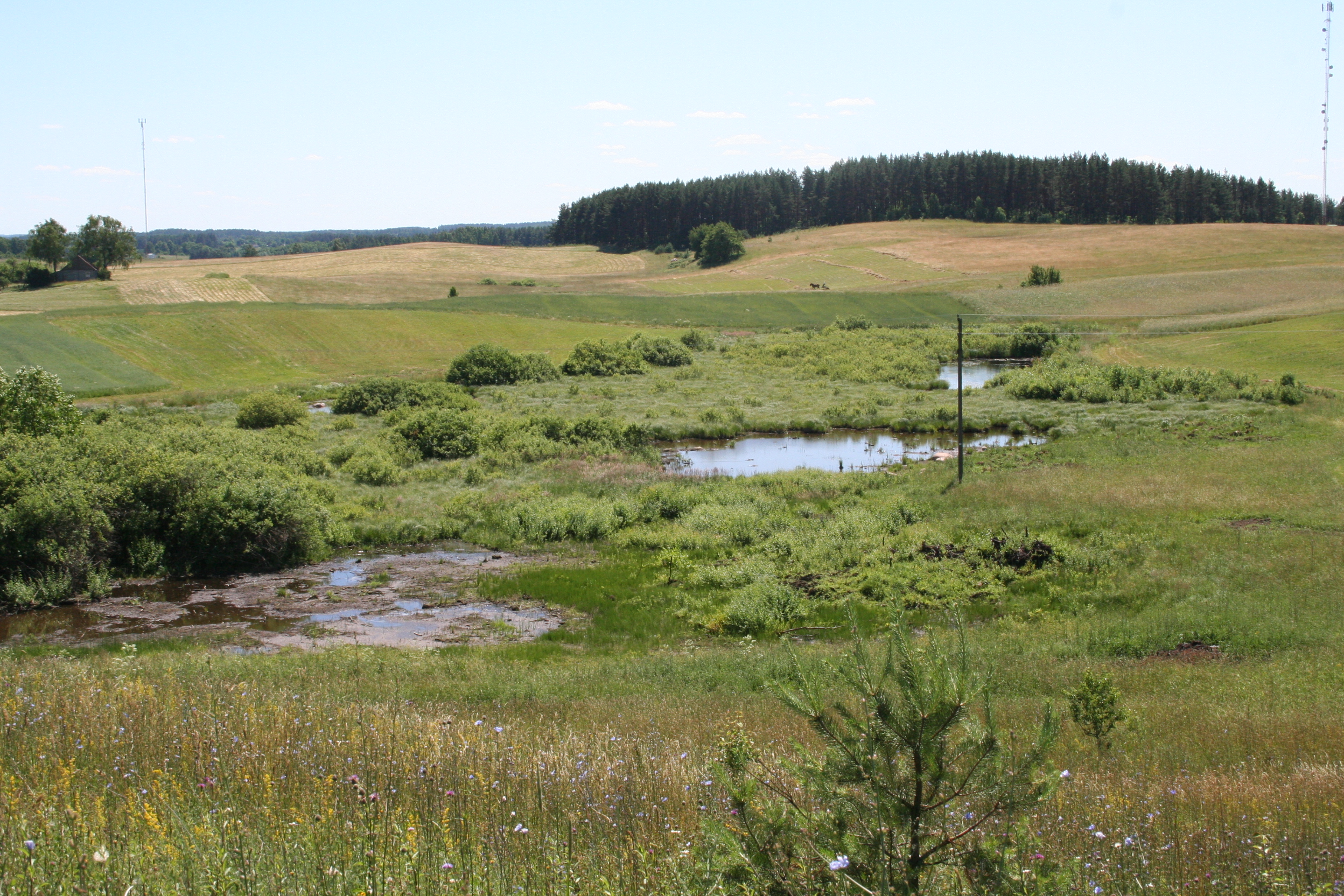About the project
Development of a Pilot Ecological Network through Nature Frame areas in South Lithuania
Lithuania, the same as neighbouring countries, during the last 60 years has experienced loss of nature conserving agricultural activities. These processes left Southern Lithuania’s landscape with a low water body density and a rapidly ongoing natural succession on abandoned agricultural areas. Such loss of open, extensively used habitats threatens amphibian and reptile species listed in Annex II and Annex IV of the Habitats Directive (E. orbicularis B. bombina, T. cristatus, B. calamita, B. viridis, P. fuscus, H. arborea, R. arvalis, R. lessonae and L. agilis also a number of bird and invertebrate species, which need small stagnant water bodies, meadows and sandy slope s).
s).
A habitat of European pond turtle and red-bellied toad after restoration
Present measures for these species conservation in the Southern Lithuania are not efficient enough. Currently existing network of 3 Natura 2000 sites inside the 2,300 hectares of the project area is not sufficient to come up to its tasks of both safeguarding the threatened target species and enabling biological communication between the core areas of the natural frame. The natural frame (integral network of natural ecological compensation areas) set in the general territorial plan of Lithuania practically does not guarantee optimal protection of the target species. Therefore this project aims to create an ecological network in Southern Lithuania by ensuring favourable conservation status for and the saving of threatened populations of selected Annex II and Annex IV species and simultaneously enhancing the ecological value of the target area.
Main objectives and expected results:
1. To secure the long-term viability of Annex II and Annex IV species populations within the ecological network by implementing direct conservation measures and habitat management actions, such as digging of suitable ponds (120 new ponds), improving existing terrestrial (40 nesting sites for E. orbicularis will be created) and aquatic (50 ponds will be renovated) habitats and implementing favourable land-use techniques (2 farms provided with life-stock to maintain grazing).
2. To save the small and isolated populations of Emys orbicularis and Hyla arborea in Southern Lithuania from extinction and to rebuild extinct populations within the ecological network. 15 E. orbicularis populations will be saved from extinction, 8 small populations will be improved by population management actions. 120 juveniles will be released into nature. Local H. arborea, B. calamita and B. viridis populations will be strengthened breeding and releasing of 3000 animals.
3. To develop a pilot ecological network in Southern Lithuania, which can be used as a model for other areas in Lithuania and adjacent countries with a comparable situation. Action plans prepared, 5 new Natura2000 sites of 5-10 ha size will be established, 20 wetland areas from 0,5 up to 2 ha size and 30 small illegal sand pits will be restored. The management regulation of the network will be prepared.
4. To raise awareness in the local population and generate acceptance towards nature conservation’s goals. This will be achieved by developing and printing of educational material, carrying out of high-publicity events, articles in local, regional and national newspapers, internet presence, establishing of a nature trail and seminars for stakeholders.
5. To generate, share and exchange expert knowledge on the issues of ecological networks, conservational aspects of the target species and best practice strategies in implementing ecologically adequate land-use techniques in Lithuania. This will be realized by intensive exchanges of the project team with international experts on workshops, meetings and seminars. Dissemination of the created knowledge will be achieved by various publications (best practice guidelines, species action plans).
